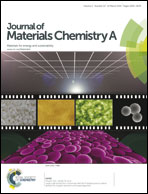Mechanism of aluminium incorporation into C–S–H from ab initio calculations†
Abstract
Blended cements have great potential to reduce the CO2 footprint due to cement production. C(alcium)–S(ilicate)–H(ydrate) in these novel materials is known to incorporate a considerable amount of Al. We have for the first time applied large-scale first principles calculations to address the mechanism of Al incorporation into low C/S ratio C–S–H. In agreement with state-of-the-art NMR information, our calculations show that Al substitutes Si in bridging tetrahedra only, and that substitutions in pairing tetrahedra are strongly disfavoured in a wide range of conditions. In broad terms, the energy penalty for having an Al atom in a pairing position is of about 20 kcal mol−1. Al in bridging tetrahedra is therefore the thermodynamically favoured state, rather than merely a kinetically trapped one in a solid–liquid equilibrium known experimentally to take a very long time to reach. A systematic investigation of Al–Al and defect–Al correlations shows that having two Al atoms as next-neighbours is particularly unfavourable, which gives clues on the limit of Al incorporation into C–S–H. All in all, the current work supports the model and methodology employed to pursue further studies in such materials (e.g., higher C/S ratio systems), in the context of what is still the open question of the structure of C–S–H.


 Please wait while we load your content...
Please wait while we load your content...